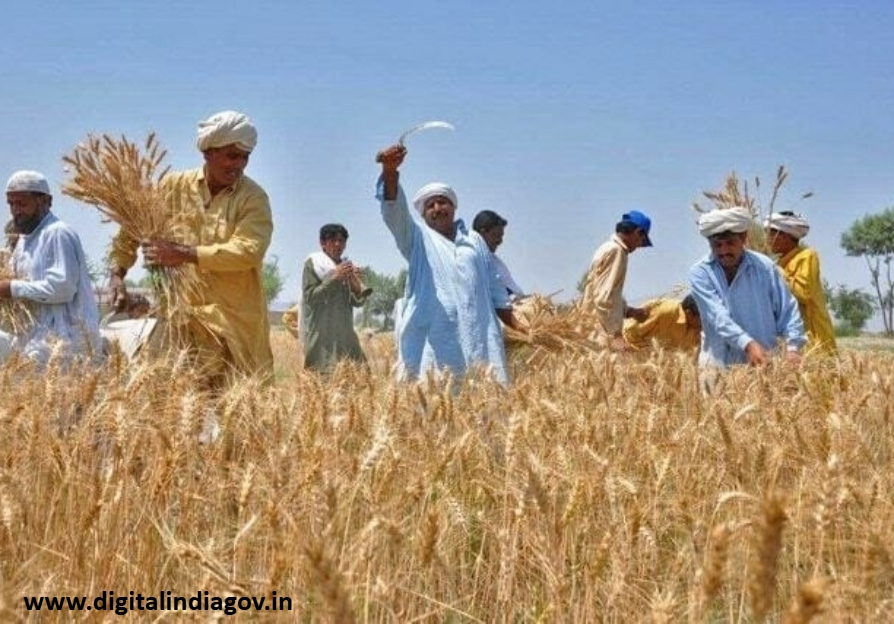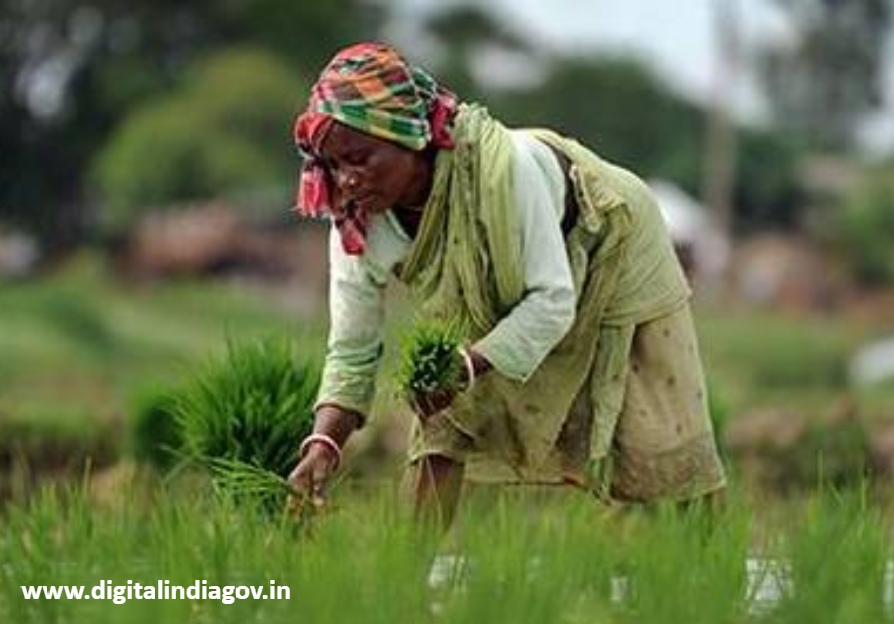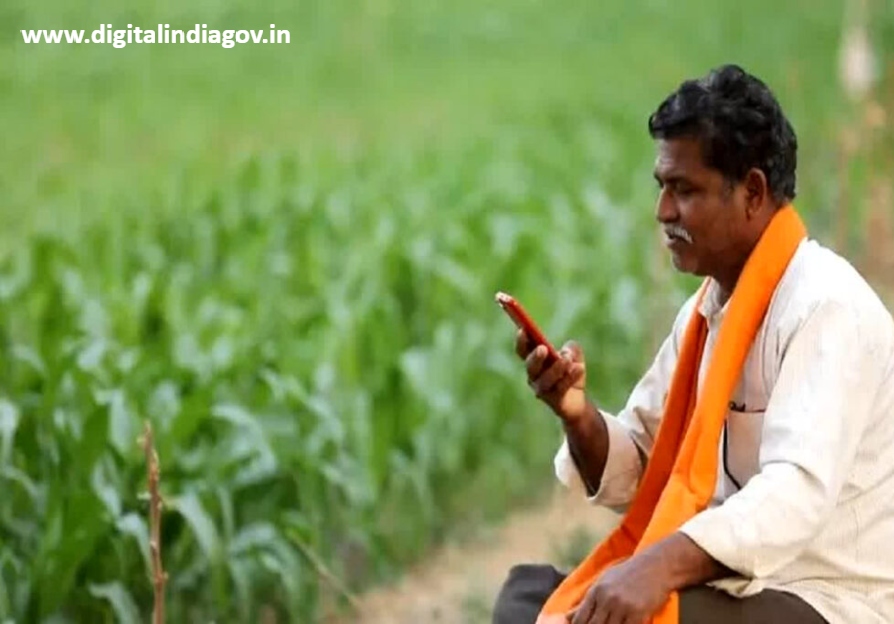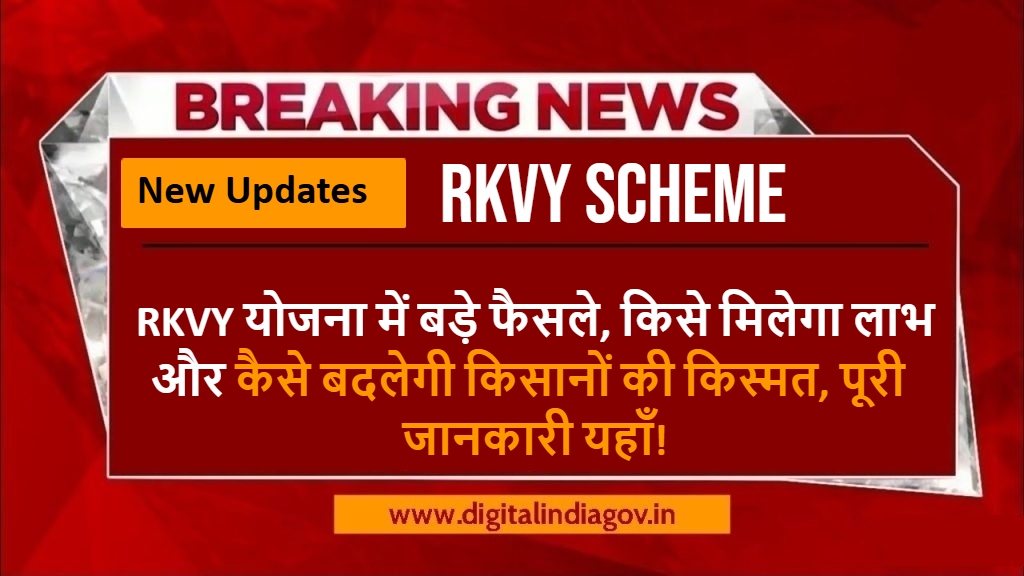RKVY Scheme, One of the Government of India’s special initiatives is the National Agriculture Development Program, often known as the Rashtriya Krishi Vikas Yojana (RKVY). The Ministry of Agriculture and Farmers’ Welfare is in charge of it. By facilitating financial assistance and fostering a system of company incubation, the program primarily aims to improve the infrastructure in agriculture and related industries in order to encourage agribusiness and agripreneurship. Remunerative Approaches for Agriculture and Allied Sectors Rejuvenation (RAFTAAR) was the new name for the 2007-created RKVY program. One of the most crucial subjects for the UPSC IAS exam is the Rashtriya Krishi Vikas Yojana (RKVY Scheme). It covers current events of national relevance in UPSC preliminary exams as well as a large portion of the Government Schemes topic in the General Studies Paper-2 curriculum.
Let’s examine the Rashtriya Krishi Vikas Yojana Scheme, also known as the RKVY-Raftaar scheme, in this post. We’ll look at its origins, goals, key elements, financing patterns, primary sectors covered, relevance, sub-schemes, and most current revisions.
Contents
What is Rashtriya Krishi Vikas Yojana?
The Government of India introduced the centrally supported Rashtriya Krishi Vikas Yojana (RKVY) in 2007. The program’s objective is to give states and union territories financial assistance for the growth of the agricultural and related industries.
Also Read: Parvaaz Scheme, shaladarpanportalgov.com, yojanaforall.com, Onlinereferjobs
Background of the Rashtriya Krishi Vikas Yojana Scheme
Key details regarding the history of the Rashtriya Krishi Vikas Yojana (RKVY) program are as follows:

- The Indian government introduced the RKVY program in 2007.
- The plan was established in response to a 2005 resolution of the National Development Council (NDC). This necessitated an all-encompassing and cohesive strategy for agricultural growth.
- The program was also designed to address the issues that the agriculture industry was facing. Low productivity, falling agricultural revenues, and rising input prices are some examples of this.
- The Ministry of Agriculture at the federal level, state governments at the state level, and district-level planning committees at the district level make up the three-tier structure used to administer the RKVY system.
Objectives of the RKVY RAFTAAR Scheme
By encouraging agribusiness entrepreneurship, reducing risk, and bolstering farmer efforts, RKVY-RAFTAAR seeks to turn farming into a profitable economic activity.
Below is a list of some of the scheme’s primary goals:
- Building the necessary pre-and postharvest agri-infrastructure would help farmers make better decisions by increasing access to high-quality inputs, storage, and market facilities.
- Develop and implement plans based on the requirements of farmers and local communities while giving states freedom and autonomy.
- Promoting value chain addition linked production models aids in raising farmers’ incomes while simultaneously boosting output and productivity.
- Creation of Extra Revenue by reducing farmers’ risk and concentrating on extra revenue-generating ventures, such as floriculture, beekeeping, mushroom farming, integrated farming, and the cultivation of fragrant plants, among others.
- utilizing many sub-schemes to attend to national objectives.
- Youth Empowerment: To empower young people by attracting them to agriculture through agribusiness models centered on agrientrepreneurship, innovation, and skill development.
Salient features of the RKVY Scheme
The following are the key components of the Rashtriya Krishi Vikas Yojana (RKVY) program:
- One State Plan program is RKVY. This implies that the states are in charge of creating and carrying out the plan.
- Because RKVY is a flexible program, states can modify it to meet their unique requirements.
- RKVY encompasses a broad range of operations, including horticulture, fishery, animal husbandry, agricultural production, and agro-processing.
This guarantees the agriculture sector’s overall growth.
- The National Rural Employment Guarantee Scheme (NREGS) is one of the government programs that RKVY promotes convergence with. By doing this, the scheme’s impact is increased.
- The federal government provides funding for RKVY, and the states contribute matching amounts.
Importance of Rashtriya Krishi Vikas Yojana (RKVY-RAFTAAR)
- Farmers can receive financial assistance from RKVY-RAFTAAR to implement better practices and innovative technology. The productivity of agriculture may rise as a result.
- Through raising agricultural output, RKVY-RAFTAAR contributes to farmers’ increased revenue.
- Both starting new agricultural endeavors and growing already existing ones are supported by RKVY-RAFTAAR. Jobs in the agriculture industry may be created as a result.
- The implementation of sustainable farming methods is encouraged by RKVY-RAFTAAR. Integrated pest management and organic farming are examples of this.
- In addition to promoting sustainable agriculture, RKVY-RAFTAAR increases agricultural production. This enhances the nation’s food security.

Also Read: Post Office Scheme Calculator, Mobilenumbertrackeronline, indnewsupdates.com, ssorajasthanidlogin.com
Important Components of the RKVY Scheme
The Rashtriya Krishi Vikas Yojana (RKVY) Scheme’s key elements are:
Crop Production
This element offers farmers financial assistance for using improved methods and new technology, including:
- precision farming, integrated pest management, and high-yielding seed types.
Animal Husbandry
This element gives farmers financial support to increase the production of their animals. This comprises:
- Support for the establishment of veterinary clinics, the acquisition of better animal breeds, and the development of fodder.
Horticulture
This element offers farmers financial assistance for the development and marketing of horticultural crops. This includes backing for:
- The construction of nurseries, the construction of irrigation systems, and the promotion of horticultural products.
Fisheries
This element gives fisherman financial support to increase their revenue and productivity. This includes backing for:
- The growth of aquaculture, the acquisition of fishing gear and boats, and the promotion of fish products.
Agro-processing
Farmers and business owners can receive financial assistance from this component. It aids in the establishment and growth of agro-processing facilities. This raises the value of agricultural products and generates employment in the field.
Eligibility for Rashtriya Krishi Vikas Yojana
The following are the requirements to be eligible for the Rashtriya Krishi Vikas Yojana (RKVY) program:
- All farmers are eligible for the program, regardless of the amount of their landholding.
- All members of the rural community who work in agriculture are eligible for the program.
- The state governments are in charge of carrying out the plan. State-by-state variations may exist in eligibility requirements.
- Nonetheless, the following are some general requirements for qualifying under the RKVY scheme:
- The candidate has to live in India.
- A current land record is a requirement for the application.
- The candidate has to be working in agriculture.
Pattern of Funding under the RKVY Scheme
Under the program, the federal government and state governments share 60:40 in financing; for states in the northeast and the Himalayas, the ratio would be 90:10. The full sum is financed by the central government for the Union territory.
Each qualified state would receive funding from the Central Government under the scheme based on the following weights and criteria:
| Process of Allocation of the funds under the RKVY to the States | ||
| Sl. No. | Parameter | Weight |
| 1 | The percentage share of net un-irrigated area in a state to the net unirrigated area of the eligible states. | 20% |
| 2 | The Gross State Domestic Product (GSDP) that the States must reach by the end of the 11th Plan will be calculated using the expected growth rates to a base year (2005–2006) GSDP for the agriculture sector and allied sectors. | 30% |
| 3 | An increase in the total Planned expenditures in the agricultural and allied sectors from the previous year. | 50% |
Sectors covered under the RKVY-Raftaar scheme
The majority of the nation’s significant sectors are covered by the RKVY Raftaar plan, including:
- Crop Production and Gardening
- Fisheries and Animal Husbandry
- Development of Dairy Products, Agricultural Research, and Education
- Wildlife and Forestry
- Plantation Management and Agricultural Marketing
- Food Storage & Storage Facilities
- Conserving Water and Soil
- Finance for Agriculture Organizations, additional agricultural initiatives, and collaboration

Also Read: NAPS Scheme, digitizeindiagovin.com, Typingspeedtestonline, Nebsit Council
Faq’s
Q. What are the Rashtriya Krishi Vikas Yojana scheme’s four key elements?
Ans: Production and Growth, RKVY – Infrastructure and Assets, RKVY Special Schemes, and RKVY Flexi Fund are the four primary parts of the Rashtriya Krishi Vikas Yojana.
Q. Does the RKVY RAFTAAR program have central sponsorship?
Ans: With the exception of the northeastern and hilly regions, where the distribution is 90:10, RKVY-RAFTAAR will be implemented as a centrally supported program, with the Indian government contributing 60% and the states contributing 40%.
Q. Which year saw the start of the National Saffron Mission?
Ans: When the National Saffron Mission (NSM) was first established in 2010–11, it was limited to saffron growing in Jammu & Kashmir. But in 2020, the government brought this objective back to life and increased agriculture in the country’s northeast.
Q. List the Indian states where the BGREI program was introduced.
Ans: As a sub-scheme of the Rashtriya Krishi Vikas Yojana, the BGREI program was introduced in 2010–11 in seven states: Assam, Bihar, Chhattisgarh, Jharkhand, Eastern Uttar Pradesh, Orissa, and West Bengal. These governments developed significant action plans for the program.
Q. Which Union government agency introduced the RKVY program?
Ans: Rashtriya Krishi Vikas Yojana is known by its full name, RKVY. In order to achieve 4% annual growth in the agriculture sector during the XIth Plan period, the Department of Agriculture and Cooperation (DAC), which is part of the Ministry of Agriculture, Government of India, launched the RKVY initiative in 2007–2008.
@PAY
